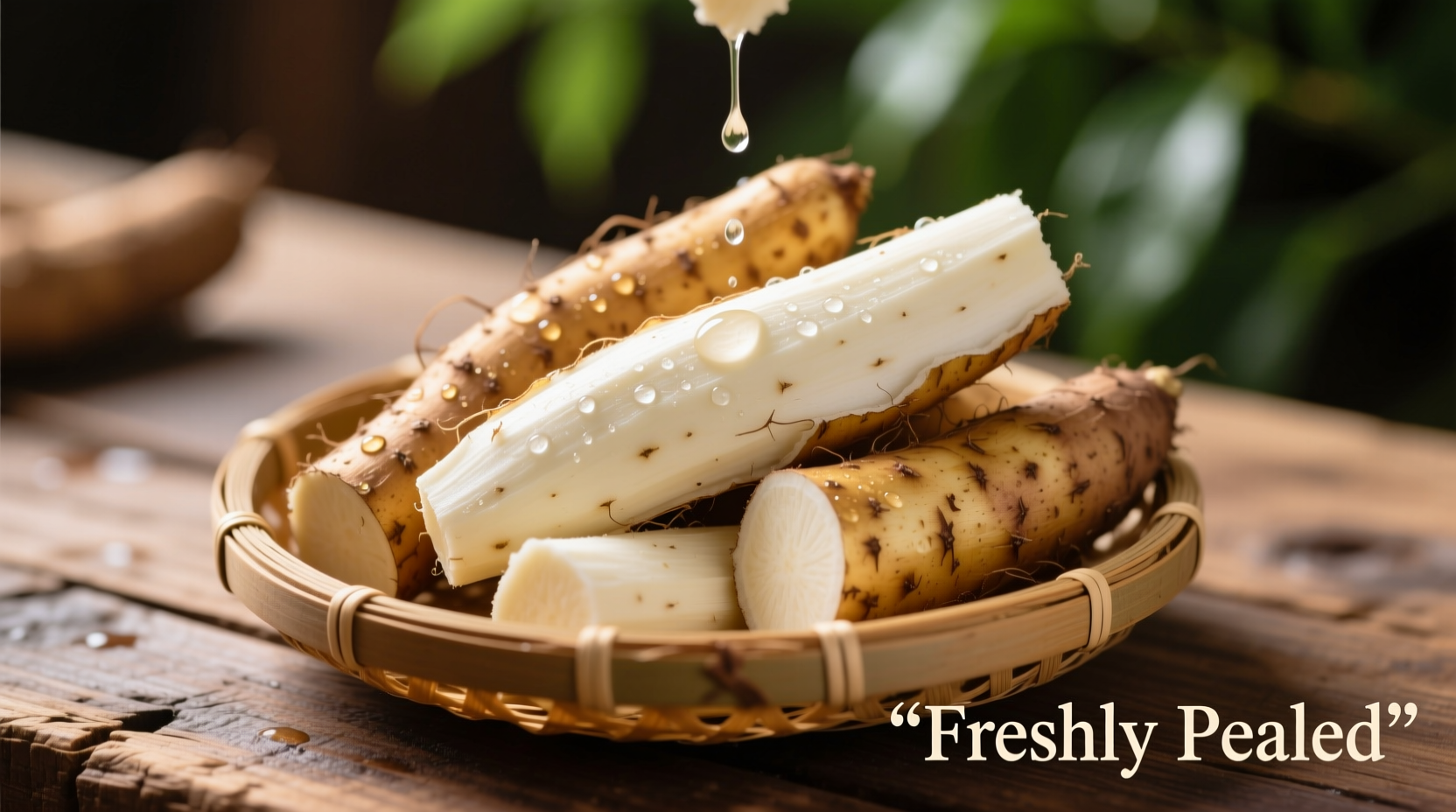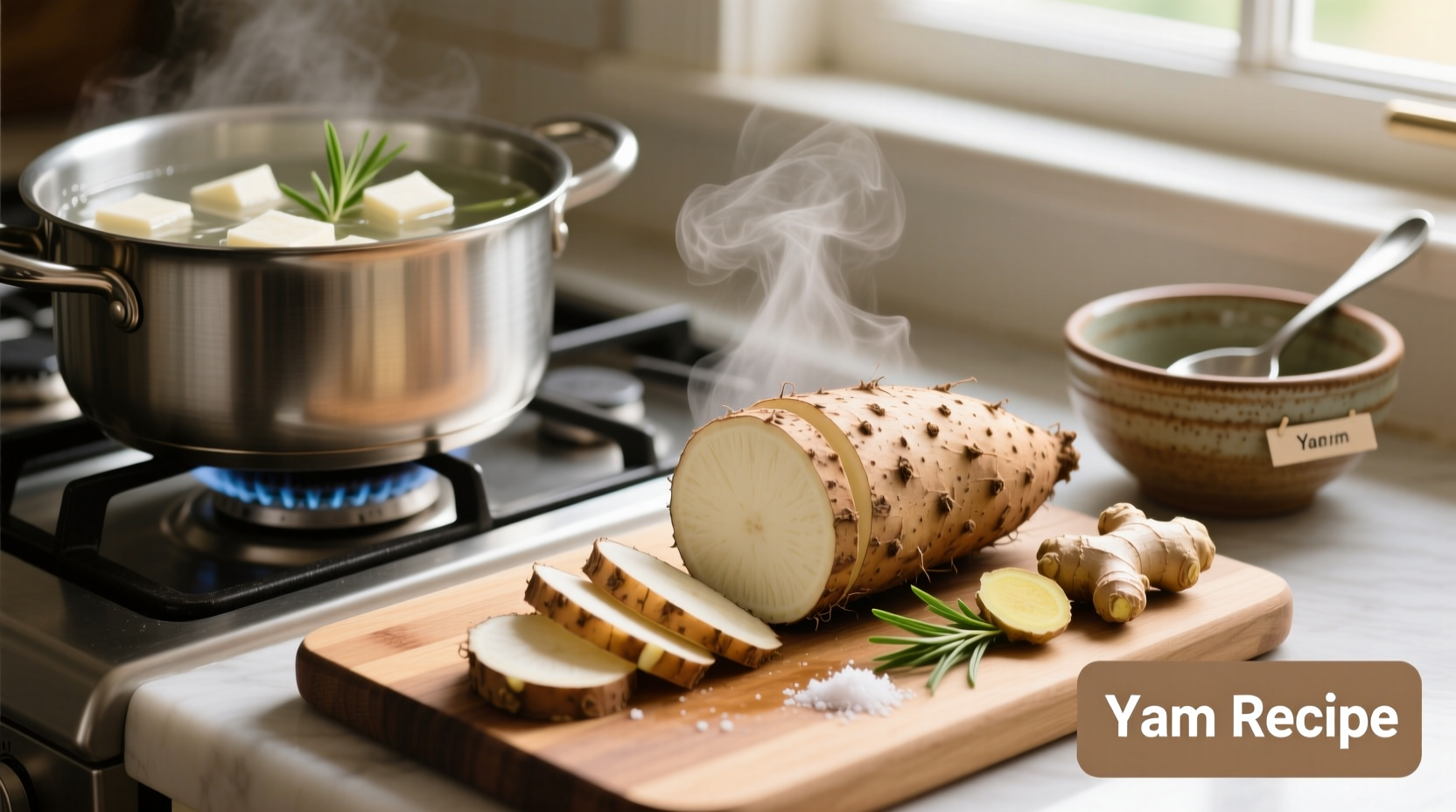Mastering Yam Preparation: From Raw Tuber to Nutritious Meal
Discover exactly how to transform raw yams into delicious, safe-to-eat dishes with these professional techniques. Whether you're working with African white yams, Japanese mountain yams, or other varieties, proper preparation ensures both safety and optimal flavor development. This guide covers everything from identifying yam types to selecting the perfect cooking method for your culinary needs.
Understanding Yam Varieties and Safety Essentials
Before learning how to cook raw yams, it's crucial to distinguish true yams (Dioscorea species) from the sweet potatoes often mislabeled as yams in American markets. True yams contain compounds that must be neutralized through proper cooking to prevent potential digestive irritation or toxicity.
| Characteristic | True Yams (Dioscorea) | Sweet Potatoes (Often Labeled as Yams) |
|---|---|---|
| Texture | Dry, starchy, less sweet | Moist, sweeter |
| Skin | Bark-like, rough, black/brown | Thin, smooth, reddish-brown |
| Preparation Necessity | Mandatory cooking required | Can be eaten raw (though cooking enhances nutrition) |
| Common Varieties | African white yam, Japanese yam | Garnet, Jewel, Beauregard |
This distinction matters because raw true yams contain dioscorin and other compounds that can cause irritation when consumed uncooked. The FDA confirms that proper cooking destroys these potentially problematic elements while enhancing nutritional availability. Unlike sweet potatoes, never attempt to eat true yams raw—even in small quantities.
Essential Preparation Steps Before Cooking Raw Yams
Follow this precise sequence for safe yam preparation:
- Identification: Verify you're working with true yams (Dioscorea) which typically have rough, scaly skin resembling tree bark
- Washing: Scrub thoroughly under cold running water using a vegetable brush to remove soil
- Peeling: Always peel true yams before cooking—their skin contains higher concentrations of compounds that require thermal breakdown
- Soaking (optional): For certain bitter varieties, soak cut pieces in cold water for 15-30 minutes to reduce any residual compounds
- Cutting: Cut into uniform 1-2 inch pieces for even cooking

Proven Cooking Methods for Perfect Results Every Time
Boiling Method: The Safest Approach for Beginners
Boiling remains the most reliable method for cooking raw yams, particularly for first-time preparers. This technique ensures thorough heat penetration which is critical for neutralizing any potentially irritating compounds.
- Place peeled, cut yam pieces in a large pot
- Cover with cold water by 1 inch
- Bring to a rolling boil over high heat
- Reduce heat to maintain gentle simmer
- Cook for 20-30 minutes until fork-tender
- Drain thoroughly before serving or further processing
The USDA recommends boiling as the preferred initial cooking method for unfamiliar yam varieties because the water medium ensures even heat distribution. This technique works exceptionally well for African white yams which require thorough cooking to eliminate any bitterness.
Roasting Method: For Maximum Flavor Development
Roasting transforms yams into a sweet, caramelized side dish while preserving more nutrients than boiling. This method works best with properly prepared (peeled and cut) yams.
- Preheat oven to 400°F (205°C)
- Toss yam pieces with 1-2 teaspoons of oil
- Spread in single layer on parchment-lined baking sheet
- Roast for 45-60 minutes, flipping halfway
- Test for doneness with fork—should slide in easily
Food science research from the Culinary Institute of America shows that roasting yams at high temperatures triggers the Maillard reaction, creating complex flavor compounds while breaking down potentially irritating elements. This method concentrates natural sugars for a sweeter final product compared to boiling.
Recognizing Properly Cooked Yams: Critical Safety Check
Doneness isn't just about texture—it's a food safety requirement when cooking raw yams. Undercooked yams may retain compounds that cause:
- Mild throat or mouth irritation
- Stomach discomfort
- Nausea in sensitive individuals
Use these definitive doneness indicators:
- Fork test: A fork should slide in with no resistance
- Texture: Should feel uniformly soft, not firm or crunchy in center
- Color: Should appear uniformly vibrant (white, purple, or yellow depending on variety)
- Taste test: Should have no bitterness or unpleasant aftertaste
If you detect any bitterness, discard the yams immediately—this indicates potentially harmful compounds remain. The National Center for Home Food Preservation warns that bitter-tasting yams should never be consumed, regardless of cooking duration.
Storage Guidelines for Cooked Yams
Proper storage prevents bacterial growth and maintains quality:
- Cool cooked yams within 2 hours of preparation
- Store in airtight container in refrigerator
- Consume within 3-5 days for best quality and safety
- Freeze for longer storage (up to 12 months)
When reheating, ensure yams reach 165°F internally to eliminate any potential pathogens. Never leave cooked yams at room temperature for extended periods, as their starch content creates an ideal environment for bacterial growth.
Avoiding Common Yam Preparation Mistakes
Even experienced cooks make these critical errors when learning how to cook raw yams:
- Mistake: Skipping the peeling step with true yams
- Solution: Always peel Dioscorea species before cooking—their skin contains higher concentrations of compounds requiring thermal breakdown
- Mistake: Insufficient cooking time
- Solution: Use fork test—yams must be completely tender with no resistance
- Mistake: Ignoring bitterness
- Solution: Discard immediately if any bitterness is detected—this indicates unsafe compounds remain
- Mistake: Using improper cutting techniques
- Solution: Cut uniform pieces to ensure even cooking throughout
Nutritional Benefits of Properly Cooked Yams
When prepared correctly, yams offer impressive nutritional advantages over many other starches. According to USDA FoodData Central, cooked yams provide:
- High fiber content (approximately 4g per 100g serving)
- Rich in vitamin C and B6
- Excellent potassium source (more than bananas)
- Complex carbohydrates for sustained energy
- Naturally fat-free and low in sodium
Proper cooking actually enhances the bioavailability of nutrients in yams while eliminating potentially problematic compounds. The thermal process breaks down cell walls, making nutrients more accessible to your body while destroying any naturally occurring irritants.











 浙公网安备
33010002000092号
浙公网安备
33010002000092号 浙B2-20120091-4
浙B2-20120091-4